Author Archives: Yona Zeldis McDonough
July 26, 2016 by Yona Zeldis McDonough
Wendy Brandmark on How Cities Have Become Characters in Her Fiction
Wendy Brandmark lives in London, but still thinks of herself a New Yorker.

Her first collection of short stories, He Runs the Moon: Tales from the Cities, charts the stories of thieves and outsiders, lost children and refugees. “My Red Mustang,” included in this collection, appeared first in Lilith’s fall 2012 issue. Brandmark talks to Lilith fiction editor Yona Zeldis McDonough about her winding journey, both on and off the page.
YZM: You’ve lived in New York, in Boston, where you were an undergraduate, in Denver, where you did an MA in creative writing, and now London. Have these different cities informed your fiction?
WB: I have always lived in cities and in the case of both New York and Denver, the city itself has an identity, a character in my fiction. I grew up in New York, in the Bronx, and I think my memories of childhood, while not necessarily unhappy, have a kind of darkness and anxiety that colors my New York fiction. It is also the city I associate most with my Jewish origins and the immigrant experience in America, both of which feature in my writing.
I lived for two years in Denver in the 1970s and never returned. For me it was an alien uncomfortable city, an odd mixture of bland and raunchy, violent and gothic. This discomfort inspired stories about outcasts and thieves, dislocation and alienation. It seems remarkable to me that some 40 years later I’m still writing Denver stories. I think there is something about my experience of the city that gives me the freedom to explore characters on the edge. I’m waiting for there to be an end to the Denver stories, but this hasn’t happened yet.
- No Comments
April 26, 2016 by Yona Zeldis McDonough
Why Hasn’t This Aspect of the Holocaust Been Explored in Fiction?
 It is the summer of 1941 and Abe Auer, a Russian immigrant and small-town junkyard owner, has become disenchanted with his life. So when his friend Max Hoffman, a local rabbi with a dark past, asks Abe to take in a European refugee, he agrees, unaware that the woman coming to live with him is a volatile and alluring actress named Ana Beidler. Ana regales the Auer family with tales of her lost stardom and charms and mystifies Abe with her glamour and unabashed sexuality, forcing him to confront his own desire.
It is the summer of 1941 and Abe Auer, a Russian immigrant and small-town junkyard owner, has become disenchanted with his life. So when his friend Max Hoffman, a local rabbi with a dark past, asks Abe to take in a European refugee, he agrees, unaware that the woman coming to live with him is a volatile and alluring actress named Ana Beidler. Ana regales the Auer family with tales of her lost stardom and charms and mystifies Abe with her glamour and unabashed sexuality, forcing him to confront his own desire.
As news filters out of Europe, American Jews struggle to make sense of the atrocities. Some want to bury their heads in the sand while others want to create a Jewish army that would fight Hitler and promote bold, wide-spread rescue initiatives. And when a popular Manhattan synagogue is burned to the ground, the characters begin to feel the drumbeat of war is marching ever closer to home.
Lilith’s fiction editor, Yona Zeldis McDonough, talks with debut novelist Kim Brooks about how she finds hope even in the most hopeless of stories.
YZM: What inspired you to write The Houseguest?
KB: I began writing not long after I read Daniel Mendelssohn’s The Lost, about his struggle to uncover the specific fates of his family members killed in Europe during the war. One part in particular stayed with me. Mendelssohn reflects at one point that we always think of the Holocaust as something that happened, when really it never stops happening, because our present is shaped by the negative space of what was destroyed. In an alternative present where the Holocaust never happened, he thinks about how he’d grow up going to Eastern Europe every summer to visit the cousins that were never born, the ones who would have been born to his murdered relatives. I’d never thought of it in that way, but through this expression of sadness and longing, it occurred to me that there’s a way in which American Jews are cultural orphans, a way in which we live with the shadow of what’s not there. That was the moment, if I had to pick one, when I became focused on (or obsessed with) this question of the American experience of the Holocaust.
- No Comments
April 19, 2016 by Yona Zeldis McDonough
Kathryn Harrison on Her Favorite Biblical Characters and the Wound of Incest
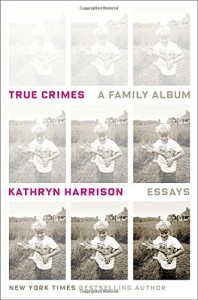 The essays in the new collection True Crimes: A Family Album by Kathryn Harrison were written over a period of 10 years and for different publications. Yet as a collection, they have a strong coherence. Both serious and surprising, these essays capture the moments and impulses that shape a family. In “Keeping Vigil,” Harrison reflects on the loss of her beloved father-in-law, and how he managed to repair something her own father had broken. In “Holiday Lies,” she describes the uneasy but necessary task of lying to her children about Santa Claus and the Tooth Fairy, withholding certain truths to protect their innocence. In “Mini-Me,” she writes about how the birth of her youngest daughter—who used to pry open the author’s eyes—finally allowed her to understand her own mother’s complicated attitudes about parenting. And in “True Crime,” Harrison writes for the first time in almost two decades about her affair with her father, and how she has reckoned with the girl she once was. Lilith fiction editor Yona Zeldis McDonough asks the author, best known for her tell-all autobiography The Kiss (1997) some questions.
The essays in the new collection True Crimes: A Family Album by Kathryn Harrison were written over a period of 10 years and for different publications. Yet as a collection, they have a strong coherence. Both serious and surprising, these essays capture the moments and impulses that shape a family. In “Keeping Vigil,” Harrison reflects on the loss of her beloved father-in-law, and how he managed to repair something her own father had broken. In “Holiday Lies,” she describes the uneasy but necessary task of lying to her children about Santa Claus and the Tooth Fairy, withholding certain truths to protect their innocence. In “Mini-Me,” she writes about how the birth of her youngest daughter—who used to pry open the author’s eyes—finally allowed her to understand her own mother’s complicated attitudes about parenting. And in “True Crime,” Harrison writes for the first time in almost two decades about her affair with her father, and how she has reckoned with the girl she once was. Lilith fiction editor Yona Zeldis McDonough asks the author, best known for her tell-all autobiography The Kiss (1997) some questions.
YZM: Was this your unconscious goal all along—to have these disparate essays form a whole—or did the idea for the collection grow out of what you had written?
KH: Pulling together essays for the first collection, Seeking Rapture, taught me how to assemble the second. In each case, the first issue to address was content. For the first, when I reviewed all the short pieces I wrote between 1992 and 2002 I saw that what I’d suspected was true: All the better essays were driven by unconscious need—not in response to an editor’s idea. For Seeking Rapture I kept perhaps 50% of the pieces I’d written; it came out in 2003. From that point forward, I wrote only what I couldn’t help writing. Essays that were completely personal, completely me, without anyone else’s input—for the first draft anyway.
By 2014, I had a baker’s dozen that felt complete; they hung together—thematically—as a chapter in a life, because they were all written during that chapter. The next challenge was to sequence the parts so they came together in a narrative arc. The collection doesn’t have a plot, not the way a novel does, but it is assembled with the intention of creating an emotional arc: conflict, rising tension, crisis, denouement. This was difficult, and I don’t know how I did it, or how to judge how successfully I did it. I know only that it took a lot of effort for something accomplished intuitively.
- No Comments
March 30, 2016 by Yona Zeldis McDonough
Aviva Orenstein, Author of “Fat Chance,” Talks Fat as Feminist Issue and Jewish Women and Food
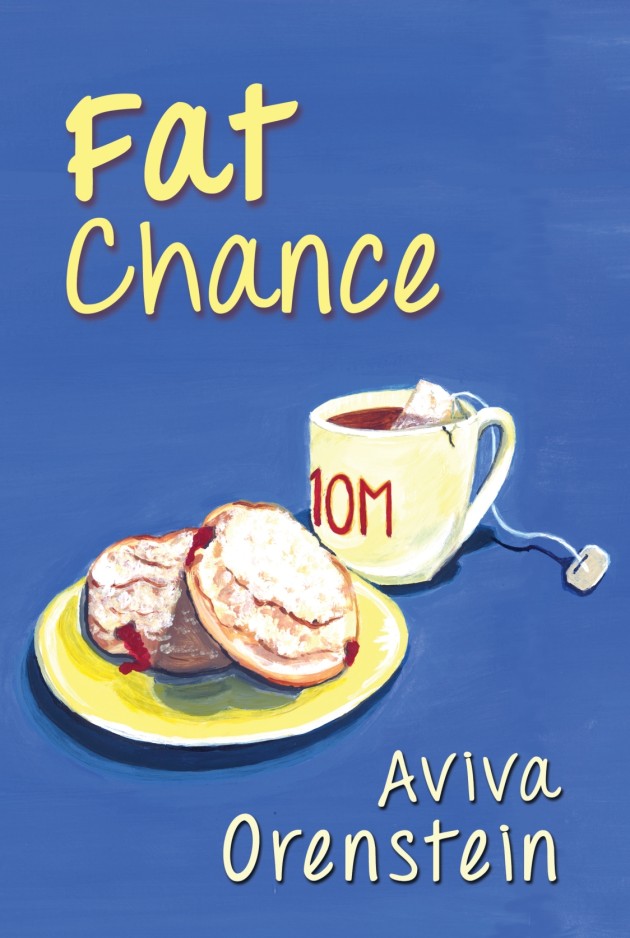 Confident at work but clueless at love, Claire is forty and zaftig—not a combo that she imagines can resolve the romance gap. Dealing with her father’s death and an angry teenager doesn’t make things any easier. With no help from her ex, who is distracted by remarriage to a much younger woman, Claire copes by relying on a faithful circle of friends, a wicked sense of humor, and a new interest in fitness here. When she meets Rob, a beguiling, slightly pudgy man at the gym, there is an instant connection that she hopes will lead to more. Maybe, just maybe, she can haul the composure she finds at work into the gym with her…
Confident at work but clueless at love, Claire is forty and zaftig—not a combo that she imagines can resolve the romance gap. Dealing with her father’s death and an angry teenager doesn’t make things any easier. With no help from her ex, who is distracted by remarriage to a much younger woman, Claire copes by relying on a faithful circle of friends, a wicked sense of humor, and a new interest in fitness here. When she meets Rob, a beguiling, slightly pudgy man at the gym, there is an instant connection that she hopes will lead to more. Maybe, just maybe, she can haul the composure she finds at work into the gym with her…
This is the premise for a debut by attorney-turned-novelist Aviva Orenstein. Orenstein writes with verve and wit, and her decision to have an overweight character at the center of her novel practically constitutes a political act. She chats via email with Lilith fiction editor Yona Zeldis McDonough to discuss the underpinnings of her new book, her legal background and what she hopes will be in store for sassy, smart-mouthed Claire.
YZM: Susie Orbach wrote the landmark book Fat is Feminist Issue in 1978. How do you think the idea in that title relates to Claire?
AO: I think that Claire recognizes and agrees with the assertion that fat-shaming of women raises important feminist concerns. Women preoccupied with their appearance and weight can be distracted from important political, social, and feminist issues. Claire’s intellectual appreciation of that does not always translate into self-confidence or self-acceptance. She struggles against self-criticism and obsessive concern about appearance. Happily, this is an area where she makes some headway over the course of the book.
YZM: Do you think Jewish women have a particularly charged relationship to food and eating?
AO: Women’s issues with food are not uniquely Jewish, but Jews’ use of food for celebration and for healing reinforce both the pleasurable and the painful aspects of food and eating. Women’s cooking is a deep part of Jewish tradition and expression of love, as when Claire makes her Grandmother’s chicken soup when Rob gets the flu. Because Jewish eating is very ritualized via the do’s and don’ts of keeping kosher, eating can feel morally laden and restrictive. Claire affirmatively eats bacon sometimes to be transgressive or to express anger at God. In fact, Claire often eats as a way of tamping down her feelings. The family orientation of eating can sometimes make enjoyment of food fraught, evoking negative family dynamics and unhappy memories of times around the dinner table. These mixtures of pleasure and pain, indulgence and restriction explain the conflicted attitude Jewish women have around food. Throw in pressure to be slim and to engage in self-denial, and one has a recipe for a very screwed up relationship with food and eating.
- 1 Comment
March 3, 2016 by Yona Zeldis McDonough
Rebecca Kanner Retells the Biblical Story of Esther in Her New Novel
 A young Jewish girl is ripped from her hut by the king’s brutish warriors and forced to march across blistering, scorched earth to the capitol city. Trapped for months in the splendid cage of the royal palace, she must avoid the ire of the king’s many concubines and eunuchs all while preparing for her one night with the monarch. Soon the fated night arrives, and she does everything in her power to captivate the king and become his queen. Her name is Esther, and Rebecca Kanner has brought her memorably to life in this retelling of the Biblical story.
A young Jewish girl is ripped from her hut by the king’s brutish warriors and forced to march across blistering, scorched earth to the capitol city. Trapped for months in the splendid cage of the royal palace, she must avoid the ire of the king’s many concubines and eunuchs all while preparing for her one night with the monarch. Soon the fated night arrives, and she does everything in her power to captivate the king and become his queen. Her name is Esther, and Rebecca Kanner has brought her memorably to life in this retelling of the Biblical story.
Kanner’s Esther learns that wearing the crown brings with it a fresh set of dangers. When a ruthless man plies the king’s ear with whispers of genocide, it is up to the young queen to prevent the extermination of the Jews. She must find the strength within to violate the king’s law, risk her life, and save her people. Kanner talks to Fiction Editor Yona Zeldis McDonough about how she went about researching the novel and what she did to make the ancient text feel new again.
Q: What drew you to the subject of Esther?
A: I was intrigued by the feat that Esther carried off—saving her people. I retold the story so that beauty and obedience weren’t her most important characteristics. I was inspired by looking at paintings of Anne Boleyn and reading descriptions of Cleopatra (as well as looking at pictures of the coins that feature her). While these women are widely believed to have been gorgeous, they were not actually pictures of traditional physical perfection. Their personalities, including both wit and charm, are what I believe accounted for much of their attractiveness. We have continued to mythologize their beauty as an explanation for their success (however short-lived it was for Anne Boleyn), instead of focusing on their intellects.
- 2 Comments
February 23, 2016 by Yona Zeldis McDonough
Why Did Véra Nabokov Destroy All Her Letters to Vladimir?
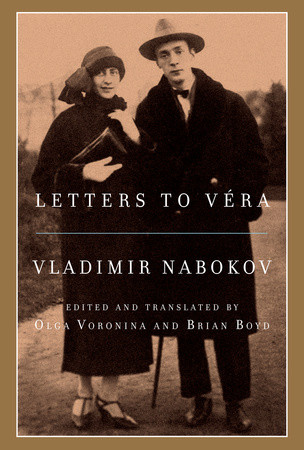 Véra Nabokov was half of one of the most famous—and enduring—literary couples of the twentieth century. She and Vladimir met in Berlin, in 1923, at a charity ball peopled with Russian expats like themselves. The party was a masquerade, and throughout the evening, Véra kept her face masked, a seemingly unimportant bit of behavior—except that it was not.
Véra Nabokov was half of one of the most famous—and enduring—literary couples of the twentieth century. She and Vladimir met in Berlin, in 1923, at a charity ball peopled with Russian expats like themselves. The party was a masquerade, and throughout the evening, Véra kept her face masked, a seemingly unimportant bit of behavior—except that it was not.
Véra Slonim was already aware of Nabokov’s reputation as a gifted poet who was quickly gaining prominence on the literary scene, and she rather boldly let him know of her admiration. Their courtship was playful and passionate, and they married in 1925, when he was 26 and she 23. For the next half century, Véra was Vladimir’s everything: first reader, editor, secretary, cook, maid, mother of his child, even protector—it was rumored she carried a gun in her purse. She was also Jewish, a fact that forces all the other facts about her to realign into a new and surprising order.
- No Comments
February 15, 2016 by Yona Zeldis McDonough
“The Man Who Got Her Pregnant Was Never Even Named”
I’ve always set my novels in New York City, where I was raised, and where, with brief exception, I’ve lived my entire life. This was less of an active decision than a default position. New York was familiar, New York was easy. I knew the nuances of the neighborhoods, the traffic patterns, the sounds of the birds, all without having to reach or stretch. But at a certain point, this very familiarity began to chafe, and I decided to expand my horizons. I settled on New Hampshire as the locale for my new novel, The House on Primrose Pond, because my husband is a New Hampshire native, and over the years, we’ve spent a good bit of time there. I wanted a place with which I was familiar, a place I could easily bring to life—because place does function as a character in a novel—and NH fit the bill.
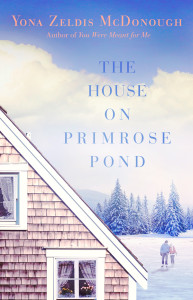 I already had my two main characters in mind—Susannah Gilmore (it had been Goldblatt, and changed by her grandfather Isaac) and her older neighbor, Alice Renfew. But somehow I wanted more, something big and cataclysmic that was connected to the state of New Hampshire that would, in some as-yet-to-be-revealed-to-me way, resonate with these characters and the particular challenges they faced. So I typed the words “New Hampshire tragedy” into Google, thinking I might find a flood, a fire, or a storm of epic and Biblical proportions.
I already had my two main characters in mind—Susannah Gilmore (it had been Goldblatt, and changed by her grandfather Isaac) and her older neighbor, Alice Renfew. But somehow I wanted more, something big and cataclysmic that was connected to the state of New Hampshire that would, in some as-yet-to-be-revealed-to-me way, resonate with these characters and the particular challenges they faced. So I typed the words “New Hampshire tragedy” into Google, thinking I might find a flood, a fire, or a storm of epic and Biblical proportions.
Instead, I found a book entitled Hanging Ruth Blay: An Eighteenth Century New Hampshire Tragedy. I was hooked even before it arrived, with two-day expedited shipping, from Amazon. And when it did show up, I devoured Blay’s story with measure of fascination and horror, and knew that I had incorporate these eighteenth-century events into the contemporary story of Susannah and Alice.
- No Comments
December 29, 2015 by Yona Zeldis McDonough
Long Before Moosewood, There Was…
Long before there was the Moosewood Cookbook and the explosion of interest in vegetarian cooking and eating, there was Fania Lewando, pioneering cook, thinker and educator. Born in Poland in 1889, Fania was the second of Haim and Esther Fiszliewicz’s six children—five of whom were girls. Her family immigrated to England in 1901 and changed their name to Fisher. As a young woman, Fania married an egg merchant, and together they moved to Vilna, where she opened a kosher dairy restaurant on the border of the Jewish quarter in old Vilnius. She also ran a cooking school nearby, and presided over a salon whose guests included Marc Chagall, and Yiddish poet and playwright Itzik Manger. She even supervised a kosher vegetarian kitchen on the MS Batory, an ocean liner that sailed between Gdynia, Poland, and New York City.
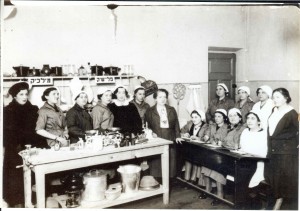
- No Comments
November 24, 2015 by Yona Zeldis McDonough
Talking in Shul
 Smart yet tender, funny yet deep, The Book of Faith, is a sly, witty send-up of squabble-filled synagogue politics deftly penned by Elaine Kalman Naves. At the heart of the novel are Faith, Rhoda and Erica, three bosom buddies, not young but not old either, affectionately known as the Three Graces. When Rabbi Nate announces that he wants a new building to house their congregation, he sets the community into a small uproar, and each of the women—well-drawn, sympathetic and complex—have a role to play in advancing or impeding the conflicting agendas that emerge. Will Rabbi Nate get his heart’s desire? Can Erica appease the whims of a rich and unpredictable donor? What does Rhoda learn and what becomes of Faith? Below is a teaser; you’ll just have to read the book to find out more.
Smart yet tender, funny yet deep, The Book of Faith, is a sly, witty send-up of squabble-filled synagogue politics deftly penned by Elaine Kalman Naves. At the heart of the novel are Faith, Rhoda and Erica, three bosom buddies, not young but not old either, affectionately known as the Three Graces. When Rabbi Nate announces that he wants a new building to house their congregation, he sets the community into a small uproar, and each of the women—well-drawn, sympathetic and complex—have a role to play in advancing or impeding the conflicting agendas that emerge. Will Rabbi Nate get his heart’s desire? Can Erica appease the whims of a rich and unpredictable donor? What does Rhoda learn and what becomes of Faith? Below is a teaser; you’ll just have to read the book to find out more.
Erica backed out of her driveway on Saturday morning in some haste. It was five past ten—she would have to hustle to make it. Since Faith’s investiture as president, this had become their routine. Instead of lingering over the fat Saturday paper, catching up on phone calls, or doing the groceries, they were off to shul together.
Erica had learned to be on time for these outings; Faith was starchy if kept waiting. “On time,” though, meant a calibrated degree of lateness. Services started at ten, but being there for Mah tovu, the first of the morning prayers, showed greater eagerness for religion than Faith deemed necessary. On the other hand, she considered arriving after 10:20 bad form for her new presidential status. A decorous entrance before the Amidah, the standing prayer, was just right.
Erica pulled up in front of Faith’s brick and stone split-level on Rosedale, just as Faith, who’d been watching for her from inside, came sailing down the stairs.
“A new outfit?” Erica asked her as she buckled up.
“Rhoda and I found it on sale at BCBG. It was a steal.”
- No Comments
November 19, 2015 by Yona Zeldis McDonough
“Greatest Generation Women”
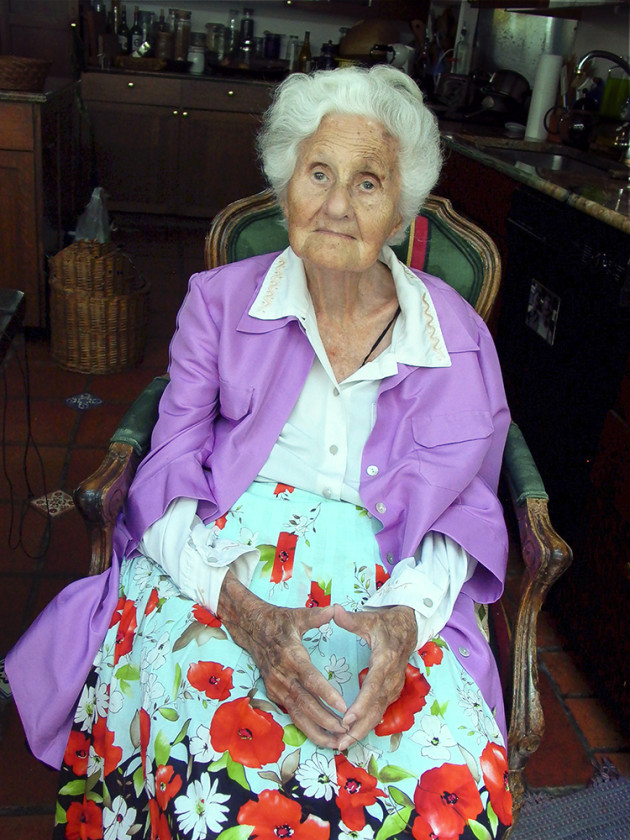
Eva Zeisel. Photo by Ellen Wallenstein.
Ellen Wallenstein’s astute and tender eye falls gently upon this group of over-80s, all photographed in the natural light of their homes or studios. The subjects, several of them notable Jewish women, skew towards artists and intellectuals, all born at the beginning of the last century. “Known as the ‘Greatest Generation’ and coming of age between the two World Wars, the effect of this generation’s contribution is evident in their creative work, which includes books, poems, paintings, photographs, plays and performances,” notes Wallenstein. “My photographs are meant to celebrate these individuals and to inspire admiration by future generations.”
- No Comments
 Please wait...
Please wait...
